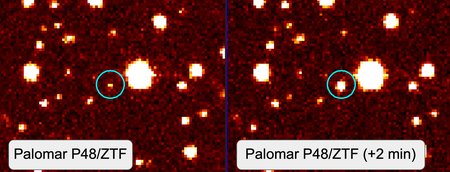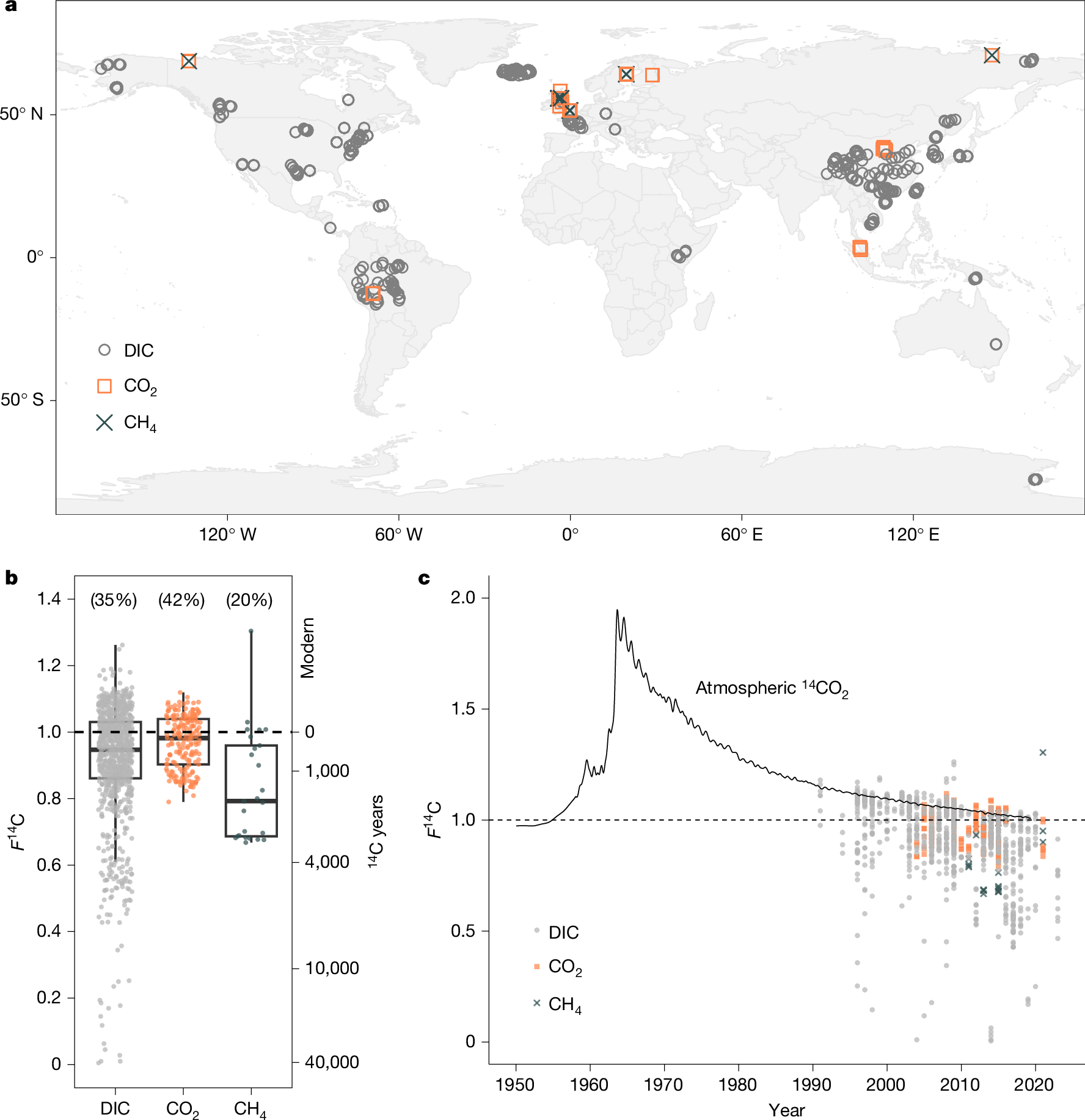2025-06-10 カリフォルニア工科大学 (Caltech)

Images of Gaia22ayj taken by ZTF reveal it to be among the most extreme pulsating objects known in space. In the span of two minutes, this binary star system increases in brightness by 700 percent in visible light. Gaia22ayj is the object at the center of the image, clearly brighter in the right image than in the left one, which was taken two minutes earlier. Credit: ZTF/Caltech Optical Observatories/A. Rodriguez
<関連情報>
- https://www.caltech.edu/about/news/a-missing-link-in-magnetic-stars
- https://iopscience.iop.org/article/10.1088/1538-3873/adb0f1
白色矮星パルサーと極星のつながり: 周期9.36分の変光星Gaia22ayjの多波長観測 A Link Between White Dwarf Pulsars and Polars: Multiwavelength Observations of the 9.36-minute Period Variable Gaia22ayj
Antonio C. Rodriguez, Kareem El-Badry, Pasi Hakala, Pablo Rodríguez-Gil, Tong Bao, Ilkham Galiullin, Jacob A. Kurlander, Casey J. Law, Ingrid Pelisoli, Matthias R. Schreiber,…
Publications of the Astronomical Society of the Pacific Published: 2025 February 20
DOI:10.1088/1538-3873/adb0f1
Abstract
White dwarfs (WDs) are the most abundant compact objects, and recent surveys have suggested that over a third of WDs in accreting binaries host a strong (B ≳ 1 MG) magnetic field. However, the origin and evolution of WD magnetism remain under debate. Two WD pulsars, AR Sco and J191213.72–441045.1 (J1912), have been found, which are non-accreting binaries hosting rapidly spinning (1.97 minutes and 5.30 minutes, respectively) magnetic WDs. The WD in AR Sco is slowing down on a P/P˙≈5.6×106 yr timescale. It is believed they will eventually become polars, accreting systems in which a magnetic WD (B ≈ 10−240 MG) accretes from a Roche lobe-filling donor spinning in sync with the orbit (≳78 minutes). Here, we present multiwavelength data and analysis of Gaia22ayj, which outbursted in 2022 March. We find that Gaia22ayj is a magnetic accreting WD that is rapidly spinning down (P/P˙=6.1+0.3−0.2×106 yr) like WD pulsars, but shows clear evidence of accretion, like polars. Strong linear polarization (40%) is detected in Gaia22ayj; such high levels have only been seen in the WD pulsar AR Sco and demonstrate the WD is magnetic. High speed photometry reveals a 9.36 minutes period accompanying a high amplitude (∼2 mag) modulation. We associate this with a WD spin or spin–orbit beat period, not an orbital period as was previously suggested. Fast (60 s) optical spectroscopy reveals a broad “hump,” reminiscent of cyclotron emission in polars, between 4000 and 8000 Å. We find an X-ray luminosity of LX=2.7+6.2−0.8×1032ergs−1 in the 0.3–8 keV energy range, while two very large array radio campaigns resulted in a non-detection with a Fr < 15.8 μJy 3σ upper limit. The shared properties of both WD pulsars and polars suggest that Gaia22ayj is a missing link between the two classes of magnetic WD binaries.



